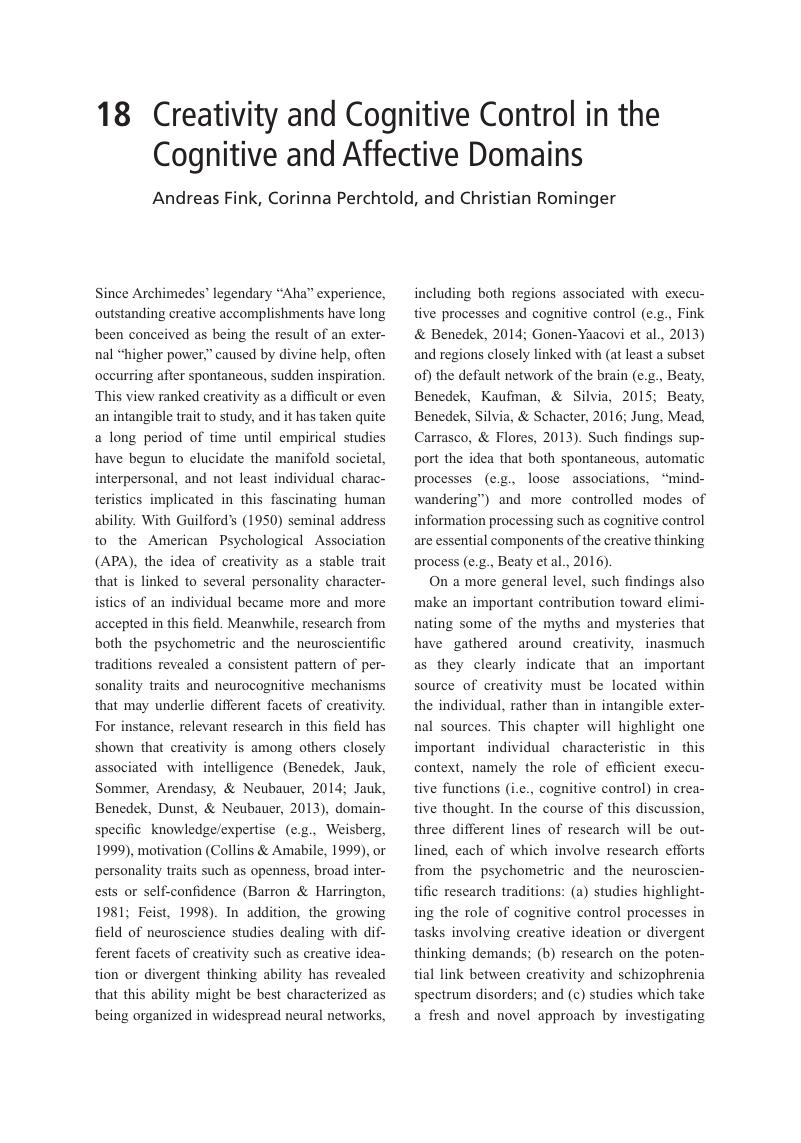Book contents
- The Cambridge Handbook of the Neuroscience of Creativity
- The Cambridge Handbook of the Neuroscience of Creativity
- Copyright page
- Contents
- Figures
- Tables
- Contributors
- Acknowledgments
- Introduction
- Part I Fundamental Concepts
- Part II Pharmacology and Psychopathology
- Part III Attention and Imagination
- Part IV Memory and Language
- Part V Cognitive Control and Executive Functions
- 17 The Costs and Benefits of Cognitive Control for Creativity
- 18 Creativity and Cognitive Control in the Cognitive and Affective Domains
- 19 Associative and Controlled Cognition in Divergent Thinking: Theoretical, Experimental, Neuroimaging Evidence, and New Directions
- Part VI Reasoning and Intelligence
- Part VII Individual Differences
- Part VIII Artistic and Aesthetic Processes
- Index
- References
18 - Creativity and Cognitive Control in the Cognitive and Affective Domains
from Part V - Cognitive Control and Executive Functions
Published online by Cambridge University Press: 19 January 2018
- The Cambridge Handbook of the Neuroscience of Creativity
- The Cambridge Handbook of the Neuroscience of Creativity
- Copyright page
- Contents
- Figures
- Tables
- Contributors
- Acknowledgments
- Introduction
- Part I Fundamental Concepts
- Part II Pharmacology and Psychopathology
- Part III Attention and Imagination
- Part IV Memory and Language
- Part V Cognitive Control and Executive Functions
- 17 The Costs and Benefits of Cognitive Control for Creativity
- 18 Creativity and Cognitive Control in the Cognitive and Affective Domains
- 19 Associative and Controlled Cognition in Divergent Thinking: Theoretical, Experimental, Neuroimaging Evidence, and New Directions
- Part VI Reasoning and Intelligence
- Part VII Individual Differences
- Part VIII Artistic and Aesthetic Processes
- Index
- References
Summary

- Type
- Chapter
- Information
- The Cambridge Handbook of the Neuroscience of Creativity , pp. 318 - 332Publisher: Cambridge University PressPrint publication year: 2018
References
- 7
- Cited by



